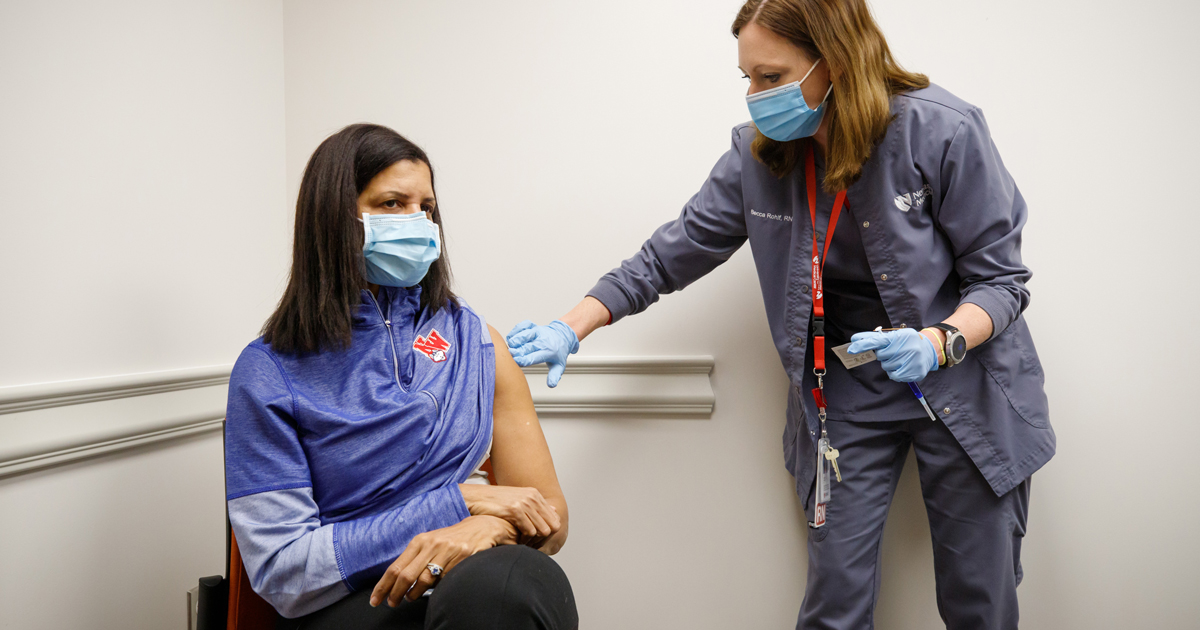Moths and tree bark: How the Novavax vaccine works

A fourth COVID-19 vaccine has been authorized in the United States. Called Novavax, it's a more traditional vaccine that uses moth cells and tree bark. Instead of an mRNA vaccine (Pfizer, Moderna) or a viral vector vaccine (Johnson & Johnson), Novavax is a subunit protein vaccine.
Infectious diseases expert Diana Florescu, MD, led the phase 3 clinical trial of the Novavax vaccine at the University of Nebraska Medical Center (UNMC). "Diversity in vaccine production helps increase the number of patients vaccinated," says Dr. Florescu. "Some might not accept mRNA vaccines, while others may be allergic to certain ingredients."
For example, some are allergic to polyethylene glycol (PEG), an ingredient in the mRNA (Pfizer and Moderna) vaccines. There's no polyethylene glycol (PEG) in Novavax.
How does the Novavax vaccine work?
The Novavax COVID-19 vaccine contains a protein (made using moth cells) plus an adjuvant (made from tree bark). An adjuvant is an ingredient added to boost a person's immune response, creating higher levels of antibodies.
The Novavax vaccine uses a telltale piece of the coronavirus: the notorious spike protein. All alone, the spike protein is harmless and can't cause COVID-19. When your immune system encounters the lonely spike protein, it produces antibodies against it. This gives you protection against future COVID-19 infection.
"Unlike mRNA vaccines, the spike protein is already premade in the Novavax vaccine. It's a shortcut," explains Dr. Florescu. "All the synthesis happens outside the body and we just give the end product: the spike protein."
Like other COVID-19 vaccines, Novavax does not cause COVID-19 infection. It can't get you sick. This vaccine doesn't contain either live or inactivated virus.
How did they get the spike protein?
The Novavax method uses moth cells to make spike proteins:
- Researchers select the desired genes that create certain SARS-CoV-2 antigens (spike protein).
- Researchers put the genes into a baculovirus, an insect virus.
- The baculovirus infects moth cells and replicates inside them.
- These moth cells create lots of spike proteins.
- Researchers extract and purify the spike proteins.
"The Novavax vaccine has no genetic material, only proteins," says Dr. Florescu. "The vaccine technology is more traditional, and it's very similar to a protein-based influenza vaccine."
Influenza vaccines have also used this moth cell factory method.
What does the adjuvant (soapbark tree extract) do?
Adjuvants increase the immune response to a vaccine. In this vaccine, soapbark tree extract adjuvant makes achieving immunity possible with a smaller dose of the spike protein.
Matrix-M is the adjuvant used by Novavax. It is based on a saponin extracted from the soapbark tree (Quillaja saponaria). The soapbark extract encourages immune cells to activate, generating a more potent immune response.
Saponins are found naturally in various plant species like beans and green peas. They're used in agriculture, animal feeds, veterinary vaccines and human food. Saponins can boost immune responses to proteins. Using the Matrix-M adjuvant, a smaller dose of spike protein achieves the desired immune response.
Learn more about how the Novavax vaccine performed in clinical trials, and where you can get it.







